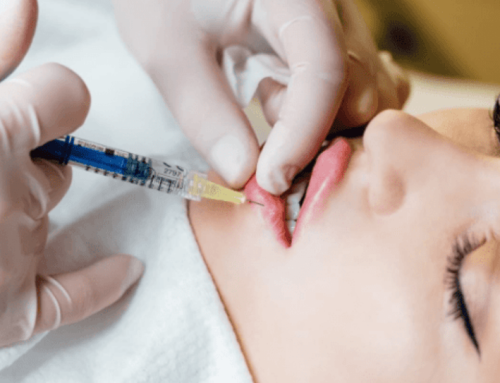Face Lift Surgery: Learn More About This Procedure
While we might feel 25 inside, aging can take a toll on our outward appearance. If you are tired of sagging skin around your mouth, jawline, chin, and neck areas, a face lift might be a good option for you. However, it is important that patients understand the procedure, the risks, and the outcome of this type of surgery.
What Is A Face Lift?
Many people mistakenly believe that a facelift includes tightening of the skin in all areas of the face. However, a facelift is a surgical procedure known as a rhytidectomy that addresses several key areas on the face, including:
The Cheeks – As we age, the skin around our cheeks can sag, and a facelift can reduce this sagging.
The Nose – While a facelift does not alter the appearance of your nose (that’s a rhinoplasty surgery), it can smooth out the skin that runs from your mouth to your nose.
The Jawline – Many people find that as they age, the skin around the jawline sags, and a facelift can smooth out and reduce the appearance of this excess skin.
Many people often have other procedures during their facelift surgery. For instance, it’s quite common for a person to also want a platysmaplasty, or neck lift, which is a procedure that lifts and smooths out the neck area. In some cases, you might also opt for a brow lift or eyelid surgery (blepharoplasty). It all depends on which facial areas you wish to change.
Many patients also mistakenly believe that a facelift is a treatment for wrinkles and fine lines. Facelift surgery is meant to reduce sagging skin and excess fat in certain areas of the face, but it is not meant as a treatment to reduce wrinkles, although you may find that your wrinkles are reduced after surgery. Still, we have other treatments to reduce the appearance of fine lines and wrinkles, which we will discuss later on in this blog.
Who Is A Good Candidate For A Face Lift?
A facelift is considered major surgery, and while most healthy adults should be able to undergo this procedure, certain conditions increase the risk of complications.
For instance, if you have hemophilia or another condition that affects blood clotting, you may not be a good candidate for a facelift. Additionally, if you are taking blood-thinning medications, this also can increase your risk of complications. Although, in some cases, we simply ask you to stop taking these medications a few weeks before surgery. Be sure to tell Dr. Thaxton about all medications and supplements you are taking prior to surgery. Even blood-thinning supplements can be an issue, and you may be asked to stop taking these before surgery.
In general, if you have diabetes or any type of immune suppression that affects the body’s natural ability to heal, you are not a good candidate for surgery. This includes people who smoke, as smoking impacts the immune system and makes it much more difficult for incisions to heal.
Typically, we tend to offer facelift surgery to patients at a stable weight. If you have a history of weight fluctuations, you may not end up with the results you want. Additionally, if you gain weight after the surgery, this can affect the results of the surgery. Again, keep in mind, that even if you are not a good candidate for a facelift, there may be non-surgical procedures that will be a good fit for you.
The First Step: A Face Lift Consultation
The first step with any surgical procedure is a comprehensive consultation. Dr. Thaxton will ask you many questions about your medical history and complete a physical exam. We may ask for medical records, as well. Again, you will need to provide us with a list of all medications and supplements you use, and we will ask questions about smoking, as well as alcohol and drug use.
Be sure to discuss all previous surgeries, whether it was an ankle surgery, a c-section, appendix surgery, or another type of plastic surgery. It is important for us to understand how your body responds to surgery and gain a deeper understanding of your overall health before scheduling any surgical procedure.
Dr. Thaxton also will take pictures of your face and examine your face, as well as discuss your expectations. Facelift surgery can provide great results, but you must have realistic expectations. While you won’t be magically transformed back into 18-year-old you, you will notice a significantly smoother, more youthful appearance.
The Face Lift Surgery: What To Expect
While a facelift is considered major surgery, it is typically an outpatient surgery. Occasionally, it will be performed in a hospital. We will either opt for general anesthesia or use a combination of local anesthesia and intravenous sedation, and the type we use depends upon the patient and perhaps the complexity of the procedure.
You should expect the surgery to last at least two or three hours, although if we are completing multiple procedures, this certainly could be a longer surgery. For instance, if you are having a face lift and a neck lift, this could take a bit more time.
During a traditional facelift procedure, the doctor will make an incision that begins at your hairline and extends behind your ears to the lower portion of your scalp. The doctor will tighten the muscles and tissues under the skin and either remove or alter some facial fat. The skin is then repositioned over your face and any excess skin will be trimmed away.
In some cases, we can use a shorter type of incision. These are known as mini-lifts, and they are a good option for people with less sagging skin or skin relaxation. Whether you are having a traditional facelift, a mini lift, a neck lift, or a combination, our goal is to always conceal the incisions so that your scars are not visible.
You will need to have a family member or friend on hand to drive you home after the procedure. While it is typically an outpatient procedure, you will not be able to drive and should have someone with you for the first 24 hours after surgery just in case a rare complication occurs. You will be feeling tired and sore, and you will need some help during the first day or so after surgery.
Face Lift Recovery & What To Expect
After surgery, we cover the area with bandages, and these will help to reduce swelling. We also often place tiny tubes under the skin near your ears to allow any fluid or blood to drain. Typically, the drains are only in place for 24 hours, although you may need bandages for several days and then you will wear a special facial wrap.
You will need to rest for a few days after surgery and keep your head elevated. We recommend that you invest in an inclined pillow to allow you to sleep or rest more comfortably. Those first three or four days should be dedicated to rest and keeping your head elevated. We also recommend wearing clothes that button up rather than trying to fit them over your head.
You can apply cooling packs to your skin, and these will reduce discomfort and swelling. There will be swelling and bruising from the procedure, and some pain. The amount of discomfort varies from person to person, but you should expect some mild pain. Some people experience a more moderate level of pain, and you can take pain medication as recommended by your surgeon. Typically, most of the pain subsides in 3-4 days.
It can be difficult at first to move your mouth, so it can be wise to stick with a liquid diet such as smoothies, protein shakes, soup, or anything that doesn’t require much chewing. We also recommend that you get your hair styled before the procedure. You should not color or perm your hair for at least six weeks after the procedure, and even a trim should be avoided for several weeks, so treat yourself to a visit to the stylist a week before your surgery.
Face Lift: Before & After
Set some realistic expectations for yourself. The swelling and bruising won’t last forever, but during that first week, it can be a bit disconcerting to look in the mirror. While everyone heals at a different pace, just rest assured that the redness, swelling, and bruising are temporary, but the end results can last for 7-10 years.
In general, don’t worry about your appearance for the first month. It takes time for the face to fully heal and, in general, most swelling will be gone about a month after the procedure, although some minor swelling can occur for several months after the procedure.
Additional Options
Of course, a facelift isn’t your only option. If you want a more youthful look, we have a few less invasive procedures to consider. For instance, Botox® and Juvéderm® treatments can soften the appearance of wrinkles and fine lines. Here’s a quick look at each of these treatments.
Face lifts don’t really get rid of wrinkles and fine lines, although you may see some improvement with wrinkles after a facelift. Botox® is a non-invasive option for people who wish to reduce the appearance of wrinkles and fine lines between the eyebrows (those frown lines) and lines or wrinkles on the forehead.
When we frown, our nerves send a message to our facial muscles and these muscles create a frown. When you inject Botox®, you prevent the nerves from sending these messages and the frown lines go away. It typically takes about a week to truly see the full results of a Botox® treatment, and each treatment lasts about three or four months.
Botox® should not be used to reduce wrinkles or lines around the mouth, but Juvéderm® can be a good option to help reduce those smile lines. Juvéderm® is what is known as a dermal filler, and we can use different types of Juvéderm® treatments to provide you with what often is known as a “liquid facelift.”
Juvéderm® is a filler created using hyaluronic acid. This acid may sound familiar to you as it is used in many skincare products to help restore a more youthful look and glow. This acid is produced by our bodies and helps keep skin moist. Unfortunately, as we age, we don’t produce as much of this hyaluronic acid and our skin begins to lose its elasticity.
With Juvéderm®, we inject this hyaluronic acid into specific areas of the face. There are dermal filler options to target the nasolabial folds, which are the folds that go from the side of your nose to the corner of your mouth. You can use Juvéderm® for lip augmentation as well as reducing the appearance of fine lines. Juvéderm® also can be used to restore or plump up the cheek area, providing a more youthful look.
Juvéderm® and Botox® can be great non-invasive options for our patients with little loose or sagging skin. When the skin has lost more elasticity than these fillers can restore, we typically recommend a face lift procedure instead.
Keeping Skin Youthful
While we can’t turn back the clock, there are many steps that people can take to keep their skin as youthful as possible. A daily skincare regimen is essential if you want to protect your skin from the elements and slow down the aging process.
We recommend that you use quality skincare products and create a twice-a-day plan that helps keep skin cleansed and protect. In the mornings, begin with a gentle cleanser, followed by a toner and a moisturizer. If you don’t use a CC cream or foundation, be sure that this moisturizer provides broad-spectrum SPF coverage.
Sun damage is one of the leading causes of aging skin, and your foundation, CC cream, and daytime moisturizers should all include a sunscreen. Avoiding peak sun hours and wearing a hat when it’s sunny also can help reduce sun damage.
At night, it’s important to cleanse the skin again and then apply a toner and a good nighttime moisturizer. Some people also add in a serum, perhaps infused with vitamin C or ceramides as an extra step to rejuvenate the skin. A weekly collagen face mask also can help moisturize the skin, and it’s a great way to pamper yourself and relax.
Staying hydrating and getting enough sleep also can slow down the aging process of our skin. Taking all of these steps can improve the look of your skin, and they also can prolong the results of dermal fillers as well as a facelift. Proper skincare is crucial, and you will notice a healthier glow very quickly with a twice-daily routine. While it won’t magically erase all the signs of aging, it will improve your skin’s tone and elasticity.
Interested In Face Lift Surgery?
Opting for a face lift is a big decision and finding the best possible plastic surgeon is the most important step in the process. Dr. Thaxton is certified by the American Board of Plastic Surgeons and is one of only two practicing plastic surgeons in West Virginia that have become elected members of the American Society for Aesthetic Plastic Surgery.
At Thaxton Plastic Surgery, we can provide you with facelift surgery as well as Botox® and dermal fillers. We also have many other treatments that can help you look and feel your best. Give us a call today and let’s book a consultation and find out which procedures are the best fit for you.






